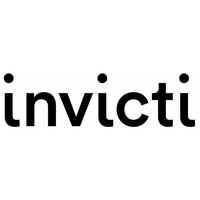Considering the variety of vulnerability scanning and management tools, businesses may face challenges in choosing the most suitable solution. When choosing a vulnerability scanning tool, users often consider the tools’:
- Inclusion of DAST/ IAST/ SCA testing methods
- Integration with SIEM and ticketing tools
- Deployment options such as hybrid, cloud, and on-prem
- Pricing
Considering these, we evaluated the leading vulnerability scanning tools and highlighted their main features. Follow the links to see our rationale and a detailed explanation of the tools below:
| Top Product | Focus | |
|---|---|---|
1. | Web Application Scanning | |
2. | Pentesting | |
3. | Vulnerability Management | |
4. | Identifying & Tracking Vulnerabilities | |
5. | Network Scanning and Security | |
The focus the tools are based on our technical reviewer’s experience. Within each vendor’s section, the AIMultiple team outlined our rationale for this selection.
Vendor selection criteria:
- 100+ employees
- 50+ reviews on B2B sites such as Capterra and G2
Differentiating features of vulnerability scanning tools
| Vendor | DAST/IAST/SCA | Reviews* | Deployment | Price |
|---|---|---|---|---|
| Invicti | DAST + IAST + SCA | 4.6 based on 88 reviews | On-Prem, Cloud, Hybrid | Not shared publicly |
| PortSwigger Burp Suite | DAST + IAST (with plug-in) | 4.6 based on 88 reviews | On-Prem, Cloud, Hybrid | From $449 to $49,000/year. |
| AlienVault USM | 4.6 based on 88 reviews | On-Prem, Cloud, Hybrid | From $12,900 to $31,140 | |
| InsightVM Rapid7 | DAST | 4.6 based on 88 reviews | On-Prem, Cloud, Hybrid | Pricing is asset-based (at least 512 assets). |
| Tenable Nessus Professional | DAST | 4.6 based on 88 reviews | On-Prem, Cloud, Hybrid | From $3,590 to $5,290 |
*Reviews are based on Capterra and G2. Sorting is first by sponsorship level, then review count.
All tools offer a free trial.
Integration capabilities
| Vendor | SIEM tools | WAF | OAuth 2.0 | Ticketing tools |
|---|---|---|---|---|
| Invicti | Splunk | ✅ | ✅ | Built-in, Jira, ServiceNow |
| PortSwigger Burp Suite | IBM Security QRadar | ❌ | ✅ | Built-in, Jira |
| Tenable Nessus Professional | IBM Security QRadar, MCafee ESM, RSA, Splunk | ✅ | ❌ | Built-in, Jira, ServiceNow |
| SonarQube | Splunk | ✅ | ✅ | Built-in, Jira, ServiceNow, ClickUp |
| AlienVault USM | Splunk, IBM QRadar,Sumo Logic | ✅ | ✅ | Built-in, Jira, ServiceNow, ClickUp |
| InsightVM Rapid7 | Splunk, McAfee ESM, Sumo Logic | ❌ | ❌ | Built-in, Jira, ServiceNow |
You can refer to the definitions and significance of these features.
You can refer to these vendors’ important core features that are not covered above.
Top Vulnerability Scanning Tools Analyzed

Invicti
Best for Web Application ScanningInvicti leverages a web vulnerability scanner, which utilizes proprietary Proof-Based Scanning technology to identify and confirm vulnerabilities accurately, ensuring the results are not false positives. Tools like Invicti are also considered DAST tools.
Invicti’s solution offers deployment options ranging from on-premises to public or private cloud environments, as well as hybrid setups. Furthermore, Invicti incorporates features like Web Application Firewall and OAuth 2.0 integration. Its primary reputation lies in conducting comprehensive web application security scans, whether for internal or external websites.
Insights from Users Assessments
Pros
- Many users state that Invicti accurately verifies access and SSL injection vulnerabilities, along with its integration with additional security resources.
- The foundational and progressive scanning capabilities of Invicti are highly regarded by its users.
- The efficacy of Invicti’s proof-based scanning technology is praised for its ability to streamline the vulnerability identification process, saving users time.
Cons
- Some users suggest that the tool’s false positive detection and vulnerability analysis resources need improvement.
- A few users have mentioned that the detail level in the reports produced by the software could be increased for better clarity.
- Concerns have been raised regarding Invicti’s licensing structure, with suggestions for making it more economical.

Burp Suite
Best for PentestingOne of the key components of Burp Suite is the Burp Scanner, which is an automated dynamic application security testing (DAST) web vulnerability scanner. Burp Suite is available in different editions, including a free community edition and a professional edition, catering to various user needs.
While the user interface might pose challenges for those with limited technical proficiency, the community edition offers internal and external functionalities for scanning and crawling web applications. Alternatively, the paid version offers enhanced features tailored to enterprises seeking a more sophisticated toolset.
Pros
- The software is praised for its easy and straightforward installation, as highlighted by several reviewers.
- Some users argue that it stands out for its precision, showing a lower rate of false positives than alternative solutions.
- Its automatic scanning capability is highly valued by those seeking fundamental security verifications.
Cons
- Issues with stability, especially regarding significant memory consumption during scans, have been pointed out by some users.
- A few users suggest the need for enhanced compatibility with platforms like Jenkins to streamline dynamic application security testing processes.
- The effectiveness of the reports has been questioned, with some users deeming them insufficiently detailed.

AlienVault USM (from AT&T Cybersecurity)
Best for Vulnerability Management & SIEMAlienVault USM (Unified Security Management), now part of AT&T Cybersecurity, is a platform designed to provide security management. This platform includes a range of security capabilities such as asset discovery, vulnerability assessment, intrusion detection, behavioral monitoring, and SIEM (Security Information and Event Management). AlienVault USM’s vulnerability scanner utilizes the Open Vulnerability Assessment Scanner (OpenVAS) as its scanning engine.
AlienVault USM primarily focuses on Security Information and Event Management (SIEM) and does not include integrated capabilities for DAST (Dynamic Application Security Testing), SAST (Static Application Security Testing), or SCA (Software Composition Analysis).
Pros
- Users argue that its central management is useful for them since they have clients in different environments. They also argue that the built-in connections with other tools are helpful.
- Users argue that the tool is easy to deploy and has integrations available to use.
- Users argue that the tool integrates with SQL, AWS, and other cloud infrastructure.
Cons
- Some users highlight the availability of the SIEM tool as a concern. Arguing that the tool has a lot of downtime and even sometimes without prior notice.
- Some users argue that, at large, the tool is heavy to manage, and servers can consume a lot of RAM.
- Some users argue that the tool becomes overly complicated to analyze DDoS attacks, not being very user friendly.

Rapid7
Best for Identifying and Tracking VulnerabilitiesInsightVM by Rapid7 is a vulnerability management tool. It leverages Rapid7’s vulnerability research, global attacker behavior insights, and internet-wide scanning data; it also integrates with Rapid7’s Metasploit for exploit validation.
The platform offers features such as live monitoring and cloud, virtual, and container asset assessments, making it a versatile tool for dynamic IT landscapes. Rapid7’s InsigtVM and Nexpose have their own ticketing tools.
Pros
- Users argue that the tool’s agent-based platform is useful for them as they can conveniently focus on their enhancements and take care of the underlying dependencies.
- Users argue that the tool makes it evident where the weaknesses are and what needs to be given top priority, stating that it is highly helpful for the vulnerability and patch management team.
- Users state that the real risk score-based approach, agent and engine, assisted SCCM patching, hardening check, remediation projects, and SLAs are optimal.
Cons
- Some users argue that memory consumption is sometimes high.
- Some users argue that the GUI is immature and inconsistent and that the query builder is limited.
- Users argue that some bugs in complex vulnerability checks sometimes take a long time to be fixed. They also state that It can be challenging to set up reports to be concise.

Tenable Nessus
Best for Network Scanning and SecurityTenable Nessus specializes in vulnerability assessments, offering both evaluations and agentless scanning. Tenable Nessus has different versions, the most known and popular version is Tenable Nessus Pro. It also has a pricier version known as Tenable Nessus Expert, which introduces additional capabilities like web application scanning and external attack surface scanning. If you’re more interested in DAST pricing, follow the link for comparison of top software.
Pros
- Users state that the tool has an easy-to-navigate GUI, and the detection capabilities are optimal.
- Users argue that Nesus has decent customer support, also stating that the tool solves the implementation in 2 ways – agent-based and credentials-based.
- Users state that plugins are updated very frequently to include the latest vulnerabilities with suggestions on how to address them.
Cons
- Some users state that the scanning time and results can be inconsistent at times.
- Some users state that they had to fetch reports for a more extended period, and scanning and reporting take a lot of time.
- A user stated that Nessus could not pull asset tags itself and that they needed to set up different automation to ingest custom asset tags into the tool.
What are the core features of vulnerability scanning tools?
All vulnerability scanning solutions in this list and most solutions in its adjacent area application security tools offer these features:
On-Prem Deployment
On-premises deployments are crucial for vulnerability scanning tools because they offer enhanced security, control, and privacy, which are essential for effectively identifying and managing vulnerabilities within an organization’s network. By hosting the tools on the organization’s own infrastructure, sensitive data doesn’t need to leave the premises, reducing the risk of exposure during external transmission.
Additionally, on-prem solutions allow for deeper integration with internal systems and customization to meet specific security requirements, providing a more thorough and tailored assessment of potential vulnerabilities that could be exploited by malicious actors.
Zero-Day Vulnerability Database
A core feature of any vulnerability scanning tool is its database of known vulnerabilities. This database should be extensive and regularly updated to include the latest vulnerabilities discovered across various systems, applications, and networks. The database serves as the foundation for the tool to identify and assess potential security risks within the scanned environment.
For vulnerability scanning tools, a zero-day vulnerability database is crucial as it significantly enhances their effectiveness in detecting and protecting against the latest, previously unknown threats. These tools rely on extensive and up-to-date databases to identify vulnerabilities within systems.
SQL injection detection
Vulnerability scanning tools equipped with SQL injection detection can identify weak points in web applications where SQLi could be executed, enabling developers and security teams to remediate these vulnerabilities before they can be exploited.
XSS Detection
Cross-Site Scripting (XSS) detection is crucial for vulnerability scanning tools because XSS attacks remain one of the most prevalent and damaging web application security threats. By identifying XSS vulnerabilities, scanning tools help prevent attackers from injecting malicious scripts into web pages viewed by other users, leading to various risks such as data theft, session hijacking, and website defacement. Timely detection and mitigation of XSS vulnerabilities ensure the integrity and security of web applications, safeguarding both users and organizations from potential exploitation and damage.
Automated Scanning and Scheduling
These tools typically offer automated scanning including dynamic application security testing capabilities, allowing users to schedule scans at regular intervals or during low-traffic periods to minimize impact on system performance. Automation ensures that the environment is regularly checked for vulnerabilities without the need for manual intervention, helping to maintain a consistent security posture over time.
Risk-Based Prioritization
After identifying vulnerabilities, the tool should assess and prioritize them based on the potential impact and likelihood of exploitation. This feature helps organizations focus their efforts on mitigating the most critical vulnerabilities first, effectively using their resources to address the highest risks to their environment.
Reporting and Remediation Guidance
Vulnerability scanning tools usually provide detailed reports that not only list the vulnerabilities found but also offer insights into their nature, potential impact, and suggestions for remediation. These reports should be clear and actionable, enabling IT and security teams to understand the risks and take appropriate steps to mitigate them.
Integration
A key feature of modern vulnerability scanning tools is the ability to integrate with other security and IT management solutions, such as patch management systems, Security Information and Event Management (SIEM) tools, and incident response platforms. Integration enhances the overall security ecosystem, allowing for more efficient vulnerability management and response processes.
What are the differentiating features, and why are they important?
WAF Integration
Integrating Web Application Firewalls (WAF) with vulnerability scanning tools is a valuable feature because it combines real-time threat mitigation with deep vulnerability assessment, creating a proactive and reactive security stance.
This integration enables automatic updating of security rules based on identified vulnerabilities, enhancing the ability to block sophisticated attacks. It ensures comprehensive coverage by protecting against immediate threats while identifying and fixing underlying vulnerabilities, thereby improving the overall security posture and compliance with regulatory standards. This synergy between WAF and vulnerability scanning tools provides a dynamic, adaptive defense mechanism that is crucial for safeguarding web applications against evolving threats.
OAuth 2.0 Integration
OAuth 2.0 integration is important for vulnerability scanning tools as it provides standardized, secure access to external resources without exposing user credentials. By supporting OAuth 2.0, these tools can authenticate securely with various services and APIs, ensuring comprehensive scanning, accurate web application assessments, and compliance with security standards while mitigating the risk of credential exposure.
Integration with SIEM tools
Integration with SIEM tools is essential for vulnerability scanning, enhancing threat detection and response. By providing real-time data on vulnerabilities and potential threats, it allows security teams to correlate this with other events and data. This integration improves risk mitigation, enables proactive measures, and strengthens incident response, ultimately boosting organizational security.
Ticketing tools integrations
Integration with ticketing tools is vital for vulnerability scanning, enabling seamless communication between security teams and IT operations. By automatically generating tickets for identified vulnerabilities, it ensures timely tracking and resolution. This streamlines remediation, prioritizes critical issues, and improves resource allocation, ultimately enhancing efficiency, transparency, and security.
Deployment options
Deployment options like on-premises and cloud are essential for vulnerability scanning tools, offering flexibility to match organizational needs. On-premises provide control for strict data sovereignty, while cloud-based options offer scalability, accessibility, and cost-effectiveness. These options ensure seamless integration into existing workflows, meeting evolving business and compliance requirements.
Further reading:







Comments
Your email address will not be published. All fields are required.